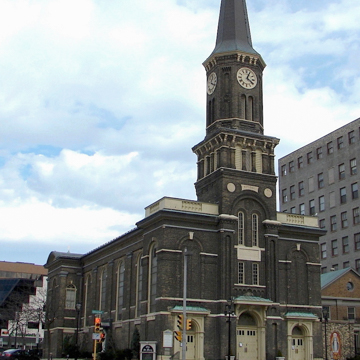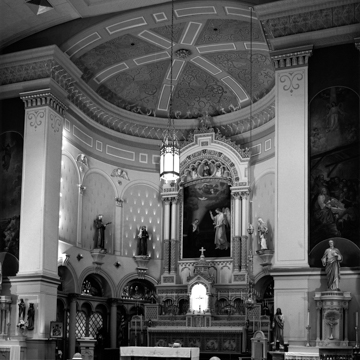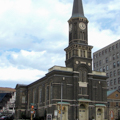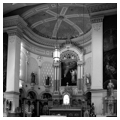As early as the 1840s, German immigrants stamped Milwaukee with their architectural mark. At old St. Mary’s, north and south side walls, a low-pitched hipped roof, and round-arched windows typify the Zopfstil, an orderly, symmetrical, late neoclassical mode of church design that rejected the showy Baroque and Rococo. It originated in Germany in the early nineteenth century and came to Milwaukee with the first wave of German immigration in the late 1840s. Construction of St. Mary’s began soon after Milwaukee secured its city charter, a year before Wisconsin’s statehood. Schulte designed the building with classrooms on the first floor. In 1866, he designed a new west facade, more ornamental than the original but remaining faithful to the round arched motif. The redesign lowered the auditorium floor, added a large rear wing, and completed the brick bell tower. The interior was redecorated following a serious fire in 1893, but many earlier features survived, including the hand-carved wooden altarpiece dating from 1878. Behind the altar hangs Franz Xavier Glink’s oil painting of the Annunciation, donated by Bavaria’s King Ludwig I in the 1840s.
You are here
Old St. Mary’s Roman Catholic Church
If SAH Archipedia has been useful to you, please consider supporting it.
SAH Archipedia tells the story of the United States through its buildings, landscapes, and cities. This freely available resource empowers the public with authoritative knowledge that deepens their understanding and appreciation of the built environment. But the Society of Architectural Historians, which created SAH Archipedia with University of Virginia Press, needs your support to maintain the high-caliber research, writing, photography, cartography, editing, design, and programming that make SAH Archipedia a trusted online resource available to all who value the history of place, heritage tourism, and learning.









